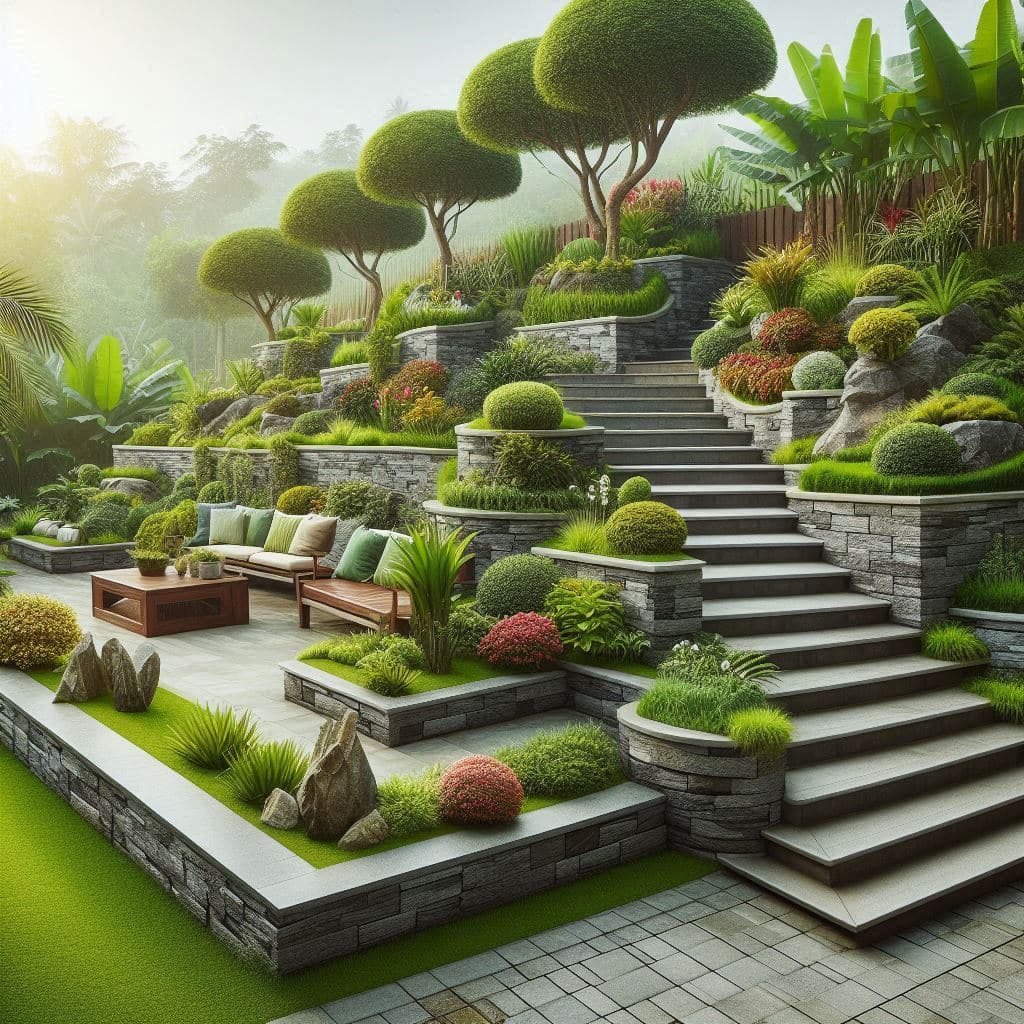Garden Retaining Wall: Transforming Landscapes with Style and Purpose

Think of your garden as more than just green space—it’s a canvas waiting for structure, elevation, and character. One of the most powerful design tools in your arsenal? The retaining wall. At first glance, it might seem like a mere functional element, meant to hold back soil. But in reality, a garden retaining wall can be the very feature that elevates your landscape from pleasant to breathtaking.
In this post, we’ll explore the practical magic behind retaining walls, their design potential, how to build them with purpose, and why they deserve a starring role in your outdoor environment.
Why Retaining Walls Matter More Than You Think
Retaining walls solve a critical problem: controlling erosion and stabilizing uneven terrain. But beyond the practical, they offer:
- Defined space: Create clear zones for planting, lounging, or walking.
- Visual interest: Add layers, textures, and symmetry to your garden.
- Functional beauty: Serve as planters, seating, or even sculptural features.
Retaining walls are not just borders—they’re invitations to engage with your landscape.
Anatomy of a Garden Retaining Wall
A well-built retaining wall blends aesthetics with engineering. The basic structure includes:
| Component | Function |
|---|---|
| Base | Provides stability and support |
| Backfill | Prevents water accumulation and erosion |
| Drainage System | Reduces hydrostatic pressure |
| Wall Material | Determines visual style and durability |
Designing with longevity in mind is key—skipping drainage or a solid base could lead to costly repairs.
Materials That Define Style
Each retaining wall material offers its vibe—from rustic charm to sleek modernity:
1. Natural Stone
- Earthy, organic appeal
- Ideal for curved, irregular layouts
- Ages beautifully with moss or lichen
2. Concrete Blocks
- Precision and strength
- Great for modular or geometric designs
- Often interlocking for easy assembly
3. Timber
- Warm and inviting
- Blends effortlessly into wooded gardens
- Requires treatment for weather resistance
4. Brick
- Classic and formal
- Works well with cottage or traditional gardens
- Offers longevity and color consistency
Choosing material is like choosing a voice for your garden—what story do you want it to tell?
✨ Creative Design Ideas to Inspire
Retaining walls don’t have to be uniform or utilitarian. Consider these creative twists:
- Tiered garden beds: Turn elevation into a layered showcase of flowers and herbs.
- Built-in seating: Add benches into the wall for a cozy nook.
- Water features: Incorporate a trickling stream or waterfall into the wall face.
- Lighting integration: Install subtle LED lighting to highlight textures at night.
You’re not just managing soil—you’re sculpting an experience.
Building Basics: What You Need to Know
If you’re tackling a DIY retaining wall, here are foundational steps to follow:
- Check local regulations: Some areas require permits for walls over a certain height.
- Plan the slope and load: Understand how much weight and water pressure the wall will endure.
- Excavate and level: Start with a trench deeper than the first layer of blocks.
- Lay a solid base: Use crushed stone or gravel to prevent shifting.
- Stack with care: Use a staggered pattern and secure materials as needed.
- Add drainage: Include pipes or weep holes to prevent saturation.
Pro tip: If your wall is over 4 feet tall, consulting with a landscape architect or engineer is a smart move.
Real World Impact: Retaining Walls That Changed Gardens
Let’s bring theory to life. One homeowner in hilly Colorado transformed a steep, unusable slope into a series of terraced vegetable beds. Using recycled concrete blocks and clever drainage, the wall became both functional and visually striking.
Another gardener in urban London used brick retaining walls to create hidden seating areas and privacy screens in a compact space. The result? An elegant oasis that feels far larger than its footprint suggests.
From suburban lawns to rooftop gardens, retaining walls unlock the hidden potential in awkward or uneven spaces.
Sustainability and Smart Choices
Eco-conscious gardening is rising, and retaining walls can play a role. Some ideas:
- Use reclaimed materials: Stone, wood, and brick salvaged from other projects add charm and reduce waste.
- Design for biodiversity: Build niches or crevices that encourage moss, pollinators, or small wildlife.
- Opt for permeable backfill: Enhances drainage and replenishes groundwater.
A retaining wall should not just work with the land, but enhance and honor it.
Maintenance That Makes It Last
To keep your wall looking and functioning at its best:
- Inspect for cracks or bulges seasonally.
- Remove weeds or moss that could damage mortar.
- Check drainage systems after heavy rainfall.
- Repoint joints in stone or brick if necessary.
A bit of upkeep preserves not just function—but the visual impact you worked hard to create.
Final Thoughts: Your Garden’s Silent Backbone
Retaining walls are unsung heroes—quietly shaping how we experience our outdoor spaces. They bring form to chaos, highlight terrain, and even serve as stages for plants and people alike.
Whether you’re dealing with a sloped yard, dreaming of vertical gardens, or simply want to add architectural charm, consider the retaining wall not as a barrier—but as a bridge between nature and structure.
The possibilities are layered, just like the walls themselves.